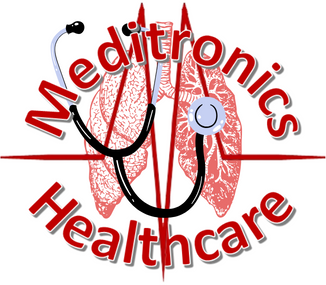What is a Home Ventilator?
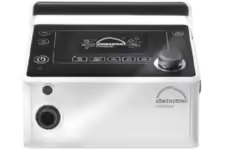
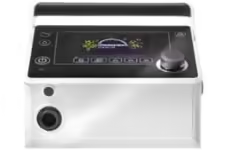
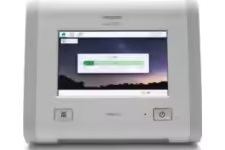
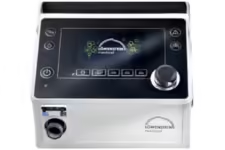
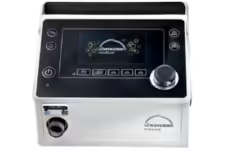
Functions:
How Does a Home Ventilator Work?
A home ventilator functions by:
- Delivering oxygen and removing carbon dioxide.
- Mechanical breathing support
- Customized breathing cycles
- Interfaces
Delivering Oxygen and Removing Carbon Dioxide: The ventilator supplies air, often enriched with oxygen, to the lungs, and assists in removing carbon dioxide from the body, which is crucial for patients with inadequate lung function.
Mechanical Breathing Support: Depending on the patient’s needs, a ventilator can either fully control the breathing process or assist the patient’s own breathing efforts.
Customized Breathing Cycles: The machine is programmed to deliver breaths at a set rate or in response to the patient’s attempts to breathe, ensuring appropriate oxygen levels and ventilation based on individual requirements.
Interfaces: The ventilator delivers air through either a mask (non-invasive ventilation) or a tracheostomy tube (invasive ventilation), depending on the patient’s condition and level of respiratory support required.
To Purchase Home Ventilator
call 6309657730 or 9393450077
When is a Home Ventilator Used?
Home ventilators are prescribed for individuals with chronic respiratory failure or diseases that impair lung function. Common conditions requiring home ventilation include:
- Chronic Obstructive Pulmonary Disease (COPD): In severe cases, COPD patients may need long-term breathing support, especially during sleep.
- Neuromuscular Disorders: Conditions like amyotrophic lateral sclerosis (ALS), muscular dystrophy, or spinal cord injuries that weaken the muscles responsible for breathing may require ventilatory support.
- Central Hypoventilation Syndrome: This rare condition, often congenital, affects the brain’s ability to control breathing, necessitating the use of a ventilator.
- Chronic Lung Diseases: Severe forms of conditions like cystic fibrosis or interstitial lung disease may reduce lung capacity to the point where mechanical assistance is needed.
- Severe Sleep Apnea: In extreme cases of obstructive or central sleep apnea where BiPAP or CPAP is insufficient, a home ventilator may be used.
Benefits:
What are the benefits of using a Home Ventilator?
Benefits of using a Home Ventilator are as follows:
Enhanced Quality of Life: Patients who rely on ventilators for respiratory support can live at home, maintain a level of independence, and spend time with family while receiving critical care.
Improved Breathing and Oxygenation: Ventilators ensure that the patient’s lungs receive adequate air and oxygen, preventing complications like hypoxia (low oxygen) and hypercapnia (high carbon dioxide)..
24/7 Respiratory Support: Unlike other respiratory devices used only during sleep, home ventilators can provide round-the-clock assistance for individuals with chronic conditions.
Reduced Hospitalization: By receiving ventilatory support at home, patients can avoid prolonged hospital stays, reducing healthcare costs and infection risks.
Customizable Settings: Ventilators can be precisely adjusted to meet the patient’s specific respiratory needs, ensuring the right level of support based on the progression of their condition.
Non-invasive and Invasive Options: Home ventilators can be used either non-invasively, via a mask, or invasively, through a tracheostomy tube, depending on the patient’s comfort and condition.
Types of Home Ventilators:
- Non-Invasive Ventilator
- Invasive Ventilator
What is the difference between Non-Invasive Ventilator (NIV) and Invasive Ventilator (IV)?
Non-Invasive Ventilators (NIV): These ventilators use a mask to provide breathing support without the need for invasive procedures like intubation. They are often used for patients with conditions like COPD or mild neuromuscular disorders.
Invasive Ventilators: These ventilators provide more advanced support and are connected to the patient via a tracheostomy tube inserted into the windpipe. Invasive ventilation is used for patients with severe respiratory failure or conditions that affect their ability to breathe independently.
When to Consider a Home Ventilator?
A home ventilator is typically recommended when a patient:
- Requires long-term respiratory support due to a chronic condition.
- Has difficulty maintaining adequate oxygen levels or clearing carbon dioxide from the body.
- Experiences frequent hospitalizations due to respiratory complications.
- Can benefit from round-the-clock monitoring and support at home.
Challenges of Using a Home Ventilator:
- Caregiver Support: Patients on home ventilators often require assistance from caregivers or family members to manage the equipment and monitor their health.
- Risk of Infection: If a tracheostomy tube is used, there is an increased risk of infection, requiring careful cleaning and monitoring.
- Cost and Maintenance: Ventilators are advanced medical devices that require regular maintenance and, in some cases, power backup systems to ensure continuous operation.
In conclusion, Home ventilators provide life-saving respiratory support for individuals with chronic or severe respiratory conditions. By delivering controlled airflow and maintaining oxygen and carbon dioxide balance, these devices enable patients to live more comfortably and independently at home. Whether non-invasive or invasive, home ventilators are an essential part of long-term care for those with compromised lung function.
